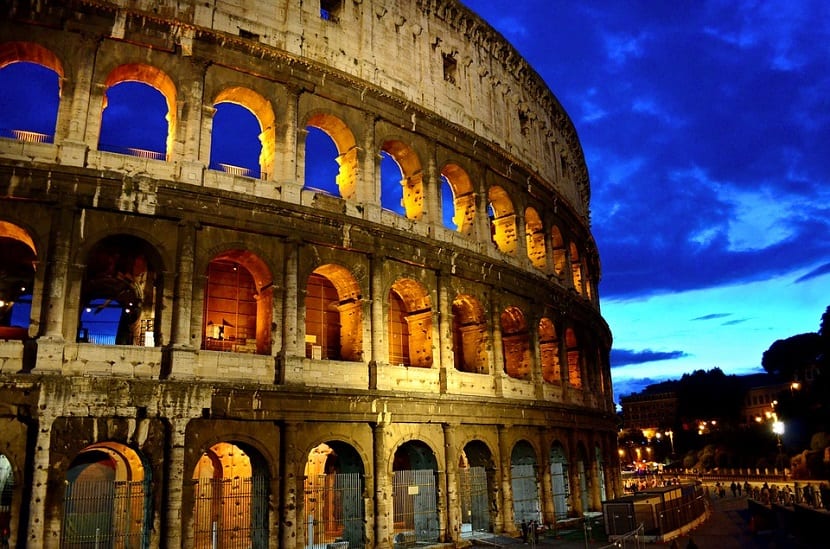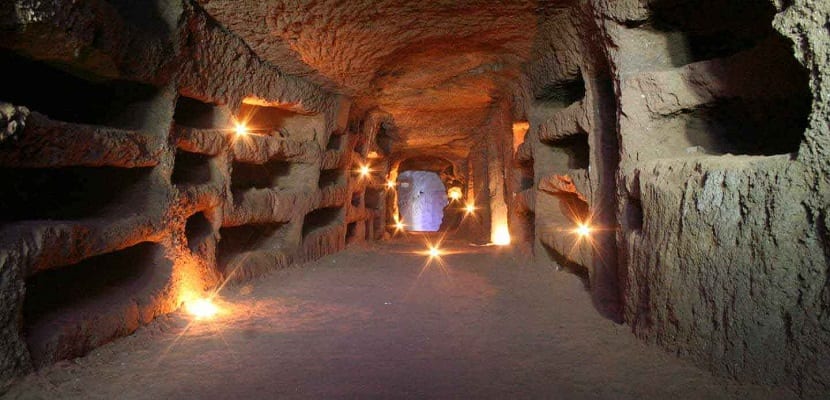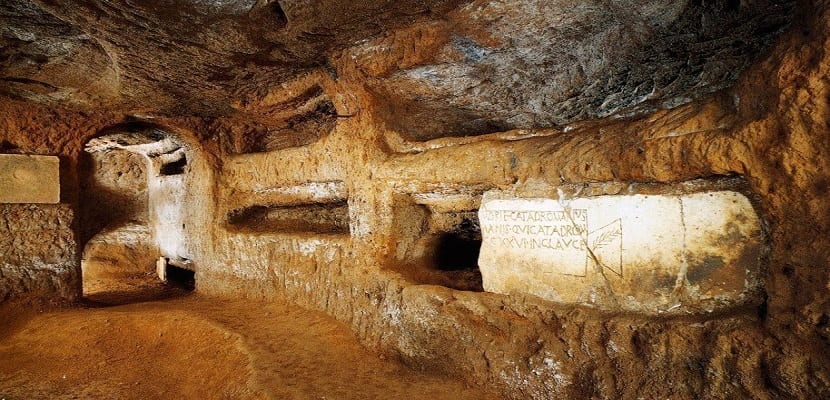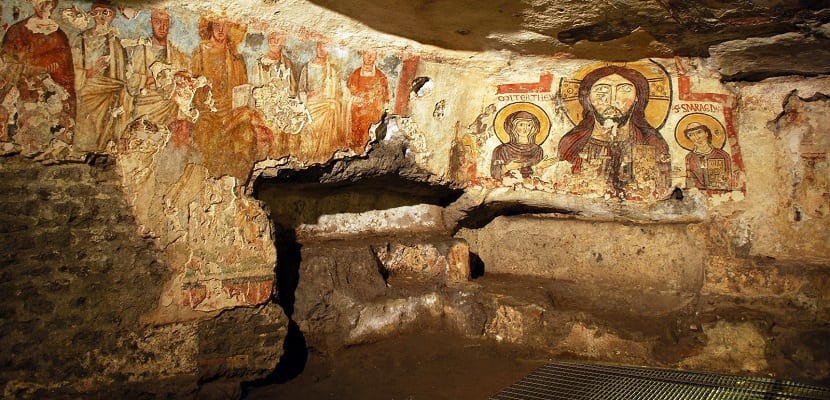
To think of Rome to think of the cradle of Western civilization, its seven hills, its spectacular architecture, which bears witness to its great past as the capital of one of the most extensive empires of antiquity. And of course it is to feel the heart of Christianity beating from the Vatican Square.
Due to its long history, in Rome there is much to discover. Interesting anecdotes, some of which still endure. Such is the case of the catacombs of Rome, underground galleries that Christians used as a cemetery for several centuries. In the past there were more than 60 catacombs but only five of them have come to us in good condition to visit them.
In the next post, we will approach the catacombs of San Calixto to know its origin, its end, its characteristics and much more. Do not miss it!
Origins of the catacombs
During the XNUMXst century, the Christians of Rome did not have their own cemeteries, so they resorted to the common cemeteries that the pagans also used to bury their dead. For this reason, Saint Peter and Saint Paul after their martyrdoms were buried in the necropolis of the Vatican Hill and the Via Ostiense, respectively.
Already in the first half of the second century, after having some concessions, the Christians began to bury their dead underground and thus the catacombs began to form. Many of them were excavated and expanded around the graves of families whose newly Christianized owners did not reserve them only for their loved ones but opened them for others.
The Roman law of the time did not allow the deceased to be buried inside the city, so these communities had to locate the catacombs of Rome outside its wall. Preferably in secluded places and hidden underground to be able to carry out Christian funeral rituals without feeling harassed.

Image | The best tourist destinations
With the edict of Milan, promulgated by the emperors Constantine and Licinius in the year 313, the Christians stopped suffering persecution but the catacombs continued to function as cemeteries until the beginning of the XNUMXth century. In the case of the catacombs of San Callisto, the Church assumed its organization and administration.
Centuries later, during the barbarian invasion in Italy (Goths and Longobards), the catacombs of Rome were continuously looted and successive Popes were forced to transfer the relics of the burial to the churches of the city for security reasons towards the middle of the century. XNUMXth century and the beginning of the XNUMXth AD In this way, the catacombs were abandoned and remained in oblivion for a long time.
In the 1822th century, Juan Bautista de Rossi (1894-XNUMX), considered the father of Christian archeology, explored the catacombs especially those of San Calixto to learn about the origins and distribution of these primitive burials. Later, around 1930, the Holy See entrusted the care of the catacombs of Saint Callisto to the Salesian Congregation of Don Bosco as the owner of the catacombs.

Image | Civitatis
Catacombs of San Calixto
The catacombs of San Callisto (Via Appia Antica, 126) came into existence around the middle of the XNUMXnd century and they are part of a complex that occupies an area of 15 hectares, on different floors that reach a depth of more than 20 meters.
The catacombs of San Calixto were the burial place of 16 popes and dozens of Christian martyrs in its network of galleries of more than 20 kilometers long.
They receive their name from the deacon San Calixto, appointed at the beginning of the XNUMXrd century by Pope Ceferino as administrator of the cemetery.. In this way, the catacombs of San Callisto became the official cemetery of the church of Rome.
They are open from Thursday to Tuesday from 9:00 a.m. to 12:00 p.m. and from 14:00 p.m. to 17:00 p.m.

Image | Virgin Mary Forums
Other notable catacombs
Formerly there were more than 60 catacombs but only five of them are open to visits today. The most important and well-known (San Calixto, San Sebastián and Domitila) are located a short distance from each other along the Via Appia and well served by buses on lines 118 and 218.
- Catacomb of San Sebastián (Via Appia Antica, 136): 12 kilometers long, it owes its name to a soldier who was martyred for converting to Christianity, San Sebastián. Together with the catacombs of San Callisto, they are the best that can be seen. Open from Monday to Saturday from 9:00 a.m. to 12:00 p.m. and from 14:00 p.m. to 17:00 p.m.
- Catacombs of Domitila (Via delle Sette Chiese, 280): These catacombs of more than 15 kilometers in length were discovered in 1593 and owe their name to Vespasian's granddaughter. Open from Wednesday to Monday: from 9:00 a.m. to 12:00 p.m. and from 14:00 p.m. to 17:00 p.m.
- Catacombs of Priscila (Via Salaria, 430): They contain frescoes very important for the history of art, such as the first representations of the Virgin Mary. They can be visited from Tuesday to Sunday from 9:00 a.m. to 12:00 p.m. and from 14:00 p.m. to 17:00 p.m.
- Catacombs of Santa Inés (Via Nomentana, 349): They owe their name to Santa Inés, who was martyred for her Christian faith and who was buried in these same catacombs that later took her name. They can be visited from 9:00 a.m. to 12:00 p.m. and from 16:00 p.m. to 18:00 p.m. They are closed on Sunday morning and Monday afternoon.
Symbols in the catacombs
The early Christians lived in a hostile society. Since they could not profess their faith openly, Christians painted symbols on the walls of the catacombs and also engraved them on the tombstones that enclosed the graves. The most important symbols are the Good Shepherd, the monogram of Christ, the praying woman and the fish.
What to see in the catacombs of Rome?
A visit to the catacombs of Rome will allow us to know in situ what Christian burials were like at a time when their faith was persecuted. It is very interesting to walk through the corridors and observe the funerary remains made so many centuries ago.
Price of tickets to the catacombs
- Adults: 8 euros
- Under 15 years: 5 euros